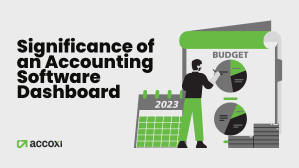

November 10, 2022

Running a business successfully requires dealing with daily routine tasks effectively and to stay updated with financial information. The accounting equation is one of the basic information which is vital in every business. The accounting equation helps you manage your company's finances more effectively and check the accuracy of your reported business transactions. Get to know better about different accounting equations that are needed in your businesses.
The accounting equation is believed to be the foundation of the double-entry accounting system. Double-entry accounting is a technique we use whenever publishing a transaction. The accounting equation states that a company's total assets are equal to the sum of its liabilities and shareholders' equity. In order to create journal entries in double-entry accounting, debits are posted on the left side, and credits on the right side of a ledger in the balance sheet. There must always be a balance between the total amount of debits and credits.
In order to implement double-entry accounting, you must make sure that your company's assets are equal to the total of its liabilities and shareholder equity using the accounting equation, often known as the balance sheet formula. Your balance sheet is kept in balance thanks to the accounting balance sheet formula.
Businesses can utilize a range of accounting formulae for a number of tasks, including creating a statement of cash flows, examining inventory turnover, and examining overall sales. The most popular accounting equations that companies need to be familiar with are listed below.
One of the most crucial accounting formulas is the accounting equation, also known as the balance sheet equation.
Assets = Liabilities + Equity
The items that your business possesses, such as real estate, cash, stock, accounts receivable, and any equipment that will enable you to generate future benefits, are all considered assets. Liabilities are debts that the company owes, including things like accounts payable, lease payments, merchant account fees, and other debt services. The portion of the business that genuinely belongs to the owner is called equity. Stockholders' equity would also fall under this category if shareholders owned the business.
This equation relates to a balance sheet. Assets on the left side of the equation must be worth the same as the total of liabilities and equity on the right side of the equation.
Business owners must pay a lot of expenses to maintain their enterprises such as rent, materials, salaries, and others. If you're not making a profit, the company may face difficulties. An essential business formula that can assist you in determining if you can break even or earn a profit is the break-even point equation. The break-even point formula is as follows:
Break-even point = (sales – fixed costs – variable costs = $0 profit)
This accounting equation comprises the following:
Fixed costs are recurrent, predictable charges that you must pay to conduct business. These expenditures can include insurance fees, rent, employee salary, etc. Sales are calculated by multiplying the sales prices by the quantity of units sold. Any expenses you have that vary according to the quantity of goods produced or sold are referred to as variable costs.
The break-even point informs you of the quantity you must sell to cover all of your expenses and make a loss of zero. Every sale that exceeds break-even will result in a profit.
The majority of businesses incur debt of some kind to function, including mortgages, company loans, and pension commitments. The cash ratio equation calculates your company's liquidity, or its capacity to settle all of these debts at once if necessary. The cash ratio equation is shown below:
Cash ratio = cash ÷ current liabilities
This accounting equation comprises the following:
Cash is the amount of money you currently have on hand. Real cash and cash equivalents, such as highly liquid investment instruments, are examples of this. The debts that the company is currently owing are known as current liabilities.
You need to know whether your business is lucrative as a business owner, especially if seeking investors. The net income calculation is one that a businessperson might utilize.
Net income = revenues – expenses
This accounting equation comprises the following:
Sales and other forms of positive cash flow into your business are referred to as revenues. The costs incurred to produce revenue are known as expenses.
Net income can be determined by deducting income from outgoing costs. When businesses are just getting started, it's likely to show a net loss. Positive net income, or a successful organization, should be the ultimate objective of any enterprise.
Use the profit margin calculation to determine how effectively your business utilizes its revenues to make a profit. This accounting formula illustrates your company's overall health:
Profit margin = net income ÷ sales
This accounting equation comprises the following:
The total amount of money your company has produced after subtracting expenses is known as net income. Sales are the operating income you bring in through your business operations.
The company's profit margin is calculated by dividing net income by sales. The net money generated for each dollar of sales is shown by the profit margin. A very healthy corporation has a high-profit margin. A small profit margin could be a sign that a company has trouble controlling costs. In order to calculate your net income, subtract your expenses from your overall revenue. It could be time to look at the numbers that make up your net income if you have a large sales revenue but a poor profit margin.
It's crucial to be aware of your product's production expenses because it demonstrates how effectively you produce your goods. The following information is made possible by using the cost of goods sold formula:
Cost of goods sold = beginning inventory + cost of purchasing new inventory – ending inventory
This accounting equation comprises the following:
The amount of inventory we have on hand at the start of the period is the initial inventory. The cost of new inventory is the sum of money your business must pay to acquire the goods or materials required to produce goods. The product you have left over at the end of the time period is known as ending inventory.
You may figure out how much you spent on producing the products you sold using the cost of goods sold equation. Gross profit can be calculated by deducting the costs of the things sold from the revenues.
A business formula that demonstrates how much debt a company employs to finance its operations is the debt-to-equity equation. The debt-to-equity ratio might assist you to determine your company's stability:
Debt-to-equity ratio = total liabilities ÷ total equity
This accounting equation comprises the following:
All of the expenses we have to cover for third parties, such as accounts payable, balances, interest, and principal payments on debt, are included in your total liabilities. Total equity is the percentage of the business that the owners actually own. In other words, it's the sum of money that the owner has put into running their own business.
A high debt-to-equity ratio shows that issuing debt, rather than selling stock to shareholders, accounts for a sizable amount of your company's funding.
The retained earnings equation demonstrates how much net income remains after dividends have been paid to shareholders. Understanding this accounting technique can help to expand the company through reinvestment, dividend payments, funding new projects, and even debt repayment. Look at the equation for retained earnings below:
Retained earnings = beginning retained earnings + net income or net loss – cash dividends
This accounting equation comprises the following:
Retained profits are the total net income earned since the beginning of the business less all cash dividends paid during that time. The balance of beginning retained earnings comes from the previous accounting period's retained earnings. Net income is the remaining amount after deducting expenses from revenues. This formula could also have a negative net outcome. Cash dividends are payments made to shareholders of common stock in cash.
Businessmen can conduct a more in-depth financial study by understanding how to calculate retained earnings. They can examine net income after taking dividend payouts into account using the statement of retained earnings. Even if there were no dividends paid out during the accounting period, owners should nevertheless construct the statement of retained earnings.
Accounting equations play a significant role in every business and it is essential to know about them in detail. From the above, you would have got a better idea of the different accounting formulas used in businesses. How about having a smart cloud-based accounting software to manage all your accounting tasks effectively? Accoxi is the best solution for you. Connect with us today and get a free trial of Accoxi to know more.




